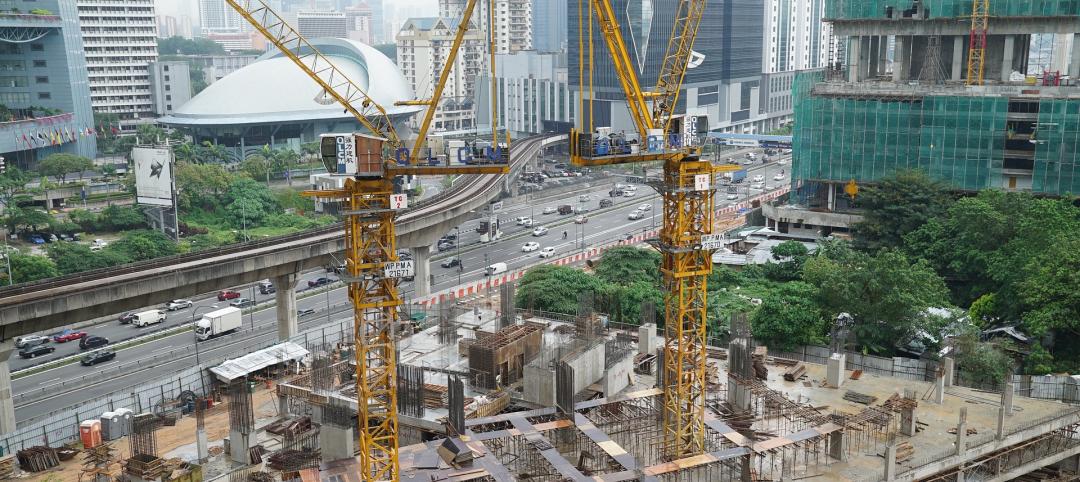Predictable, flexible, and efficient, prefabrication is quickly becoming an integral part of many construction projects. Though not a one-size-fits-all solution, prefabrication can address a multitude of common challenges—particularly as schedules continue accelerating, while labor capacity is decreasing.
From jobsite issues and location constraints to sequencing and scheduling, each project comes with a unique set of challenges, requiring a tailored solution on a per-project basis. While prefabrication, its utilization, and the approach differ for each project, the results and benefits for owners are consistent.
Is prefabrication right for my construction project and how can I plan for success? There are many factors requiring careful consideration when determining whether a project is a good fit for prefabrication and optimizing a project’s prefabrication plans.
Owner requirements
- Owner prefabrication expectations — Some owners, particularly in certain industries such as mission critical and healthcare, have prefabrication parameters that teams must work within. For example, when owners have multiple projects in the pipeline, it is becoming more common that prefabricated products may be bulk purchased for multiple projects.
“We’re seeing more bulk purchasing of premanufactured components,” said Prefabrication Integration Director Sara Curry. “For instance, a healthcare client recently bought bathroom pods for five jobs at the same time and will store them until each job needs them. This is one example of how owner programs can impact project delivery.” Many owners also have directives to track and meet predetermined off-site goals. - Matrix of responsibility — To meet all requirements, there needs to be a clear matrix of OFCI/OFOI responsibility for both the owner-furnished equipment and modular or premanufactured components.
Construction type
- Construction type can significantly impact prefabrication, whether to utilize it, and to what extent. But ultimately, all project types—greenfield, expansions, renovations and buildouts—can be good candidates for prefabrication.
Team Assembly
- Getting team members on board during design to explore potential options and plan ahead for optimal prefabrication outcomes is crucial. This ensures alignment of goals, expectations, accountabilities, plans and efficient execution from start to finish.
Budgets
- With current cost escalation and evolving economic conditions, teams can gain cost certainty by finalizing decisions and purchasing components and materials for fabrication sooner.
- Since a premium could be associated with certain prefabrication plans, teams should ensure prefabrication/modularization costs align with project goals, such as speed to market.
Design optimization
- Design optimization, or designing for prefabrication, enables contract documents to clearly articulate the scope of each prefabricated or modular component, including where conventional methods will be required for complete, efficient installation.
Logistics
- Laydown, the logistics of loading different sized components into and throughout the building, and onsite storage plans must be carefully considered.
Trade Partner Expertise
- Assess trade partners’ prefabrication capabilities and their offsite facilities to ensure alignment with the project’s needs.
- Depending upon local labor availability and expertise, remote prefabrication and long-distance transportation to the jobsite should be considered.
What pain points can prefabrication solve?
The enhanced collaboration and planning associated with prefabrication help mitigate project risks and address a range of potential pain points throughout design and construction.
Cost escalation and supply chain challenges. Offsite construction can help mitigate some of today’s common—and unpredictable—challenges, such as cost escalation, long procurement lead times, and labor shortages by identifying these issues early enough to address them before they can affect the project.
Jobsite issues. From organizing and storing equipment, to coordinating trades to maximize efficiency and space, shifting work offsite for prefabrication can help alleviate common jobsite issues, including site cleanliness and safety, materials storage, delivery inefficiencies, onsite traffic and congestion, and trade stacking.
Scheduling. The decision to utilize prefabrication affects the entire project, requiring design and construction teams to collaborate earlier, ultimately driving schedule efficiencies. While offsite construction typically increases the time required during design to coordinate certain components, the effect is a positive one that yields efficiencies throughout the entire construction process.
“The additional design coordination provides more opportunities to catch issues earlier. This helps alleviate the need for additional coordination after construction documents are issued. Additionally, by starting earlier we can fine tune other factors affecting the overall schedule and speed to market, such as delivery of premanufactured components and sequencing of installation,” said Curry.
RELATED STORIES
- Onsite prefabrication for healthcare construction
- 3 ways prefabrication doubles as a sustainability strategy
- Modular electric rooms are the new normal
What are the prefabrication options?
As prefabrication continues to evolve and its use increases, the options are expanding as well. From comprehensive modular systems to smaller, repeatable components, prefabricated approaches can be scaled and implemented appropriately depending on owners’ and projects’ needs.
Full modular buildings/systems — Completely fit out sections of a building (e.g., a fully finished hotel room or sections of a hospital patient wing); these are turnkey, fully finished products that are simply put in place and connected.
Modular components — Hotel or hospital bathroom pods, electrical rooms, central energy plants/central utility plants
Assemblies — Hospital patient room headwalls and footwalls, multi-trade MEP racks (vertical and horizontal), exterior skin panels
Sub-assemblies — Corridor top out walls, panelized roof systems, pre-clad frame systems (for items like trash enclosers, equipment screens, gates, fences, etc.), temporary items (formwork, enclosers, safety items, protection, access, etc.)
Kit of parts — While some prefabricated components are delivered to the site assembled and ready for installation, another option is to break components down into a “kit of parts” that can be easily assembled onsite to increase efficiency.
“Delivering kits to the jobsite, with parts cut to size, eliminates room for error, enhances quality, and increases efficiency since the process is repeatable and precise,” said Effenheim. “Complete kits—that start with structural components and take a job or scope all the way through finishes—and collated kits—turning basic parts into kits by work area—are great ways to utilize offsite construction for smaller-scale components.”
What are some common prefabrication challenges to avoid?
Put simply, when it comes to prefabrication, timing is everything. Not only is timing of team assembly essential, but the timing of other tasks also plays a critical role in successfully leveraging prefabrication.
Material and equipment selection. Since offsite prefabrication can occur ahead of and concurrently with onsite, conventional construction, decisions must be made and materials must be procured earlier for prefabricated elements to avoid delays and inefficiencies.
Decisions and design changes. Major design changes can have a ripple effect on prefabricated components. “If decisions or the design change after prefabrication starts, timing and cost are affected across the board,” said Senior Superintendent-Prefabrication Nick Effenheim. “Changes can require resequencing of prefab component deliveries, for example, and affect the project schedule. This could then cause double-handling and potentially additional storage costs—meaning one late design change impacts multiple phases of the project.”
Validating existing conditions. Capturing existing conditions with laser scanning on renovation projects can help coordination of the design. “On renovations, existing conditions and verification of space must be completed to ensure prefabricated components will conform with the space. For example, existing systems in a space may make it difficult to install above ceiling multi-trade MEP rack systems,” said Curry.
Licensing. This up-front planning work also applies to licensing. Ensuring the selected modular manufacturer(s) are following local jurisdiction requirements for inspections prior to shipment can save significant time and head off potential delays.
Procurement strategy. To have the greatest impact, when it comes to timing, offsite construction needs to be accounted for before scopes are written. The additional planning and design needed to incorporate prefabrication requires earlier scopes than owners are typically accustomed to. But when an owner’s design team is on board and is part of the design coordination process with the trade partners building the offsite components, how components get built and overall schedule efficiencies are positively impacted.
What does the future hold for prefabrication?
Perhaps the best thing about prefabrication is not simply the benefits or efficiency it offers, but rather the possibilities that are still being realized.
“Schedules are getting more compressed and labor shortages are getting worse,” said Curry. “But those constraints are helping drive innovation and learning. They’re helping us embrace manufacturing best practices and pushing us to be smarter about the way we build. As we continue changing the way we build, we’ll also continue to reap the benefits of these innovations.”
About the Author
Brian Burkett is a Vice President with JE Dunn Construction, based in the firm's Kansas City, Mo., office.
Related Stories
Cultural Facilities | Aug 21, 2024
Baltimore’s National Aquarium opens 10,000-sf floating wetland that mimics the harbor’s original tidal marsh habitat
The National Aquarium in Baltimore has opened the National Aquarium Harbor Wetland, a 10,000-sf floating wetland that mimics the Inner Harbor’s original Chesapeake Bay tidal marsh habitat. Located between Piers 3 and 4 on Baltimore’s Inner Harbor, the $14 million project features more than 32,000 native shrubs and marsh grasses.
Mixed-Use | Aug 21, 2024
Adaptive reuse of a Sears store becomes luxury mixed-use housing
6 Corners Lofts at 4714 W Irving Park Road, Chicago, Ill., opened in March of 2024 as a 394,000-sf adaptive reuse project born out of a former Sears store.
Building Materials | Aug 19, 2024
Federal 'buy clean' construction materials label program unveiled
The U.S. Environmental Protection Agency announced a plan for implementing a new label program to boost American production of more climate-friendly construction materials and products. The label program will prioritize steel, glass, asphalt and concrete.
Museums | Aug 19, 2024
The Tampa Museum of Art will soon undergo a $110 million expansion
In Tampa, Fla., the Tampa Museum of Art will soon undergo a 77,904-sf Centennial Expansion project. The museum plans to reach its $110 million fundraising goal by late 2024 or early 2025 and then break ground. Designed by Weiss/Manfredi, and with construction manager The Beck Group, the expansion will redefine the museum’s surrounding site.
Reconstruction & Renovation | Aug 19, 2024
Movement to protect historic buildings raises sharp criticism
While the movement to preserve historic buildings has widespread support, it also has some sharp critics with well-funded opposition groups springing up in recent years. Some opponents are linked to the Stand Together Foundation, founded and bankrolled by the Koch family’s conservative philanthropic organization, according to a column in Governing magazine.
Government Buildings | Aug 19, 2024
GSA posts new RFI for enabling energy efficiency, decarbonization in commercial buildings
The U.S. General Services Administration (GSA), in collaboration with the U.S. Department of Energy, recently released a new Request For Information (RFI) focused on enabling energy efficiency and decarbonization in commercial buildings. GSA wants to test innovative technologies through GSA’s Center for Emerging Building Technologies.
MFPRO+ New Projects | Aug 16, 2024
At 60 stories, the Paramount multifamily development will stand as Nashville’s tallest high rise
When complete, the 60-story Paramount building, at 750 feet high, will be the tallest high rise tower in Nashville, Tenn., surpassing the city’s current record holder, the 617-foot AT&T Building. The $390 million Paramount project recently launched condo sales after securing more than $230 million in construction financing.
Urban Planning | Aug 15, 2024
New York City begins first large-scale porous pavement installation
New York City is installing its first large-scale porous pavement installation along seven miles of roadway in Brooklyn. The project will keep 35 million gallons of stormwater out of the combined sewer system each year, according to a news release.
Curtain Wall | Aug 15, 2024
7 steps to investigating curtain wall leaks
It is common for significant curtain wall leakage to involve multiple variables. Therefore, a comprehensive multi-faceted investigation is required to determine the origin of leakage, according to building enclosure consultants Richard Aeck and John A. Rudisill with Rimkus.
MFPRO+ News | Aug 14, 2024
Report outlines how Atlanta can collaborate with private sector to spur more housing construction
A report by an Urban Land Institute’s Advisory Services panel, commissioned by the city’s housing authority, Atlanta Housing (AH), offered ways the city could collaborate with developers to spur more housing construction.
















